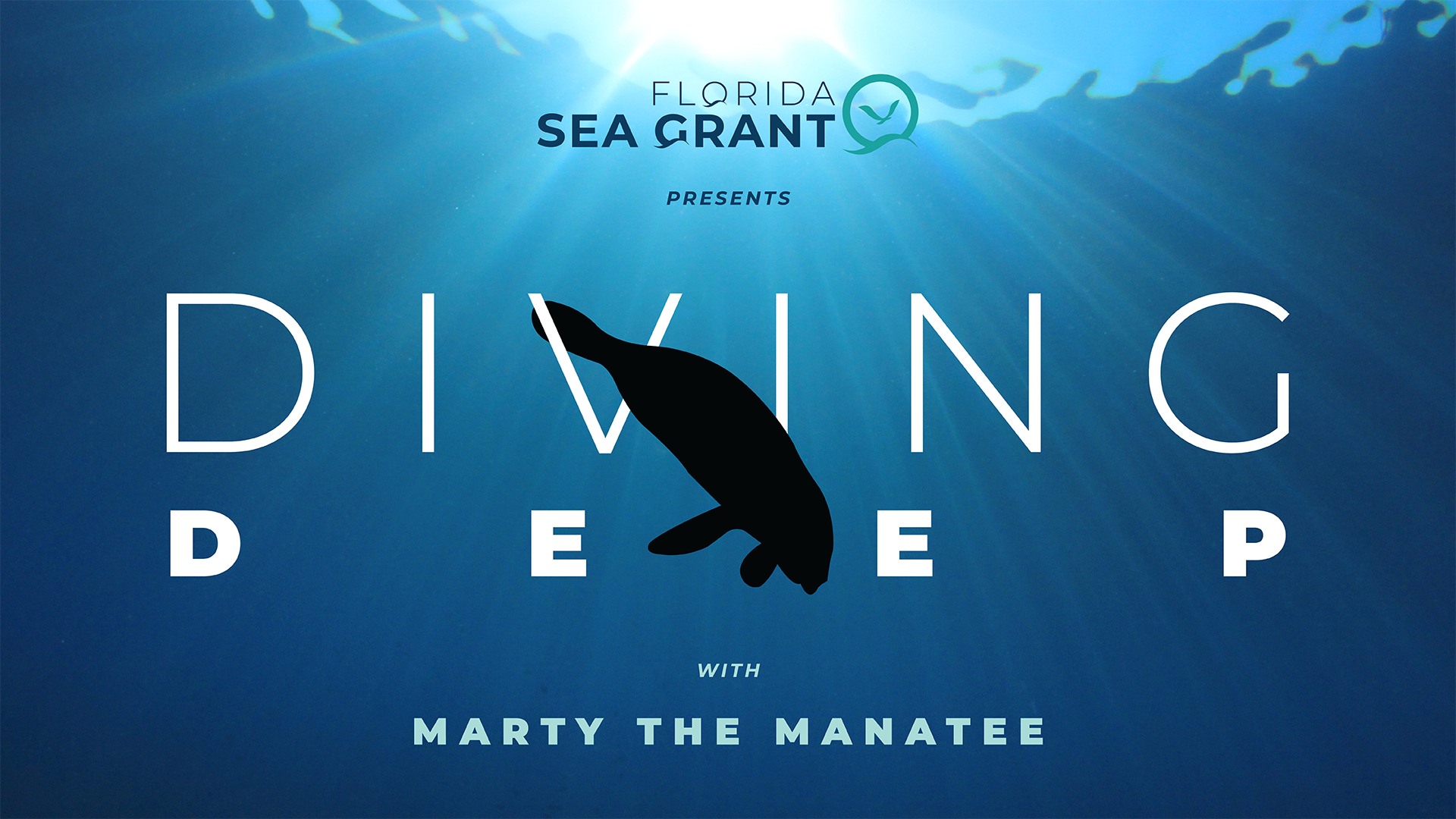
Marty the Manatee, a Florida native, is a part of an extensive line of modern manatee species that have inhabited Florida waterways for millions of years. Marty, who has been grazing seagrass for forty years, tells us about his role in the ecosystem and what we can do to help him and his friends.
Q: Where do you live?
Marty: I can live all over the place. I’ve lived in shallow and slow-moving rivers, estuaries, and coastal areas. Manatees are unique among marine mammals because we can move freely between fresh water, brackish, and saltwater environments. I’m considered a migratory species, so I go here and there, but I like to stay in areas where seagrass beds and vegetation are abundant.
Q: What are your roles in the waterways?
Marty: I support plant growth and help to maintain a healthy ecosystem. I do this by keeping the seagrass short which, in turn, helps keep the seagrass bed healthy. I’m what’s called a primary consumer on the food chain with no natural predators, so the biggest role I have is grazing. That’s good for me though because I must eat 1/10 of my body weight in plants every day, which for an average manatee like me is 100 pounds of food!
Q: What is the biggest threat to your species?
Marty: As I said before, I have no natural predators, but I am on the Endangered Species List. The biggest threat to me is humans. Due to my shallow living conditions and grazing habits, I have to stay close to the water’s surface which puts me at risk for boat collisions. Boat collisions are a leading cause of death for me and my friends, and most of us have scars from them. The other huge threat we face is harmful algal blooms. We can get extremely sick and sometimes die from swallowing red tide toxins. Harmful algal blooms can also kill seagrass, taking away our primary food source.
Q: Break down what you do in a day.
Marty: Since we have to eat so much, I spend 6-8 hours a day simply feeding! Depending on how active I’ve been, I rest anywhere from 2-12 hours a day. The other hours of the day, I will travel, investigate different items in the water, and interact with my other manatee friends. Sometimes, for fun, we swim upside down or do flips in the water.
Q: How can we help you?
Marty: Clean up after yourself, pay attention to waterway signs, and get educated. Keeping the waterways litter- and fishing line-free helps everyone – not just us, and it is so easy! Furthermore, participating in volunteer cleanups is a terrific way to get involved with your local community. No Wake Zone signs are in place to protect the marine community, and especially manatees, from interaction with boats and boaters. Paying close attention to these signs proves beneficial to boaters and manatees alike – we can both avoid unnecessary damage! The last thing you can do for us is not to give us water or food. This puts us at an increased risk of getting hit by boats. These are simple things that our human friends can do every day to preserve manatee life and habitat.



